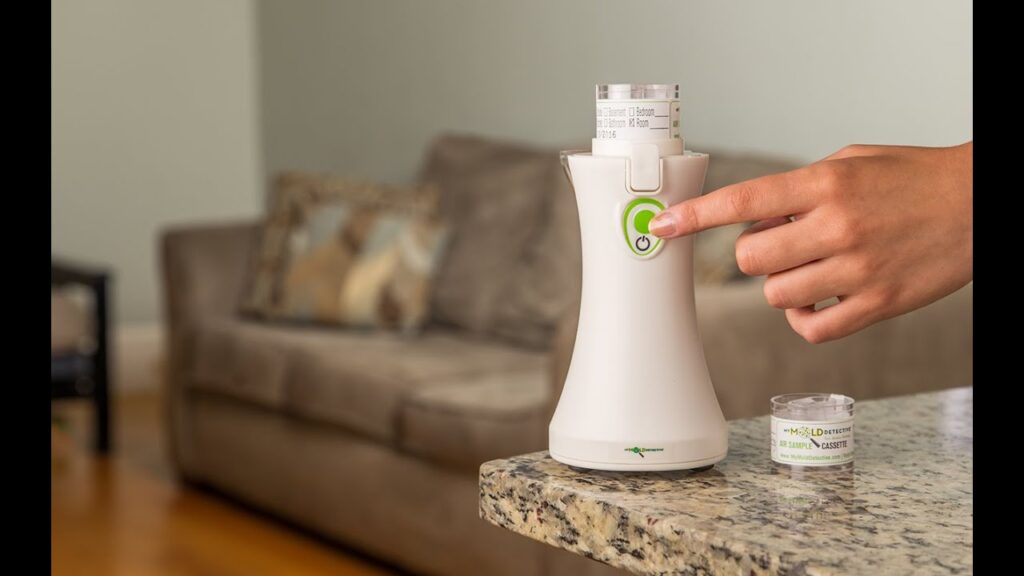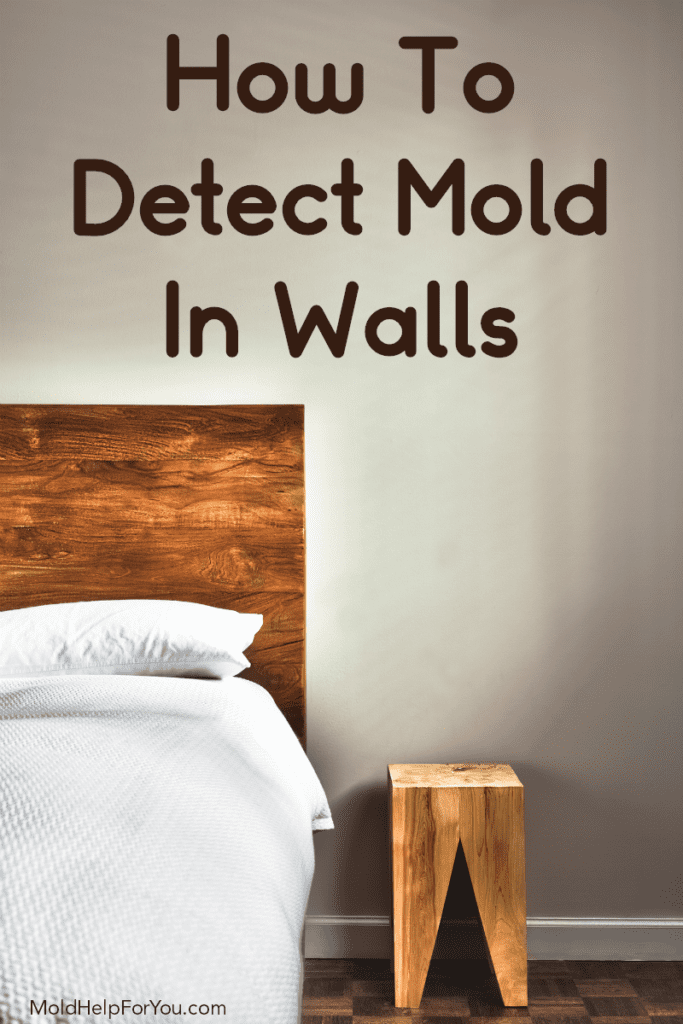If you’ve ever dealt with mold issues in your home, you know just how sneaky and persistent it can be. From causing allergic reactions to damaging the structural integrity of your walls, mold is a problem that needs to be swiftly addressed. But how can you even detect it in the first place? That’s where the big question arises: is there a tool specifically designed to detect mold in walls? In this article, we will explore the possibilities and help you find the answer you’re looking for. So, let’s get started!

Understanding Mold Detection in Walls
Mold can be a silent intruder that poses serious health risks if left undetected in your home’s walls. It is crucial to have a comprehensive understanding of mold detection in walls to ensure a healthy living environment for you and your family. This article aims to provide you with valuable information about the importance of detecting mold in walls, common signs of its presence, conventional methods for detection, the need for specialized tools, professional mold inspection services, the pros and cons of DIY testing kits, new innovations in mold detection, and the consideration of safety and health risks.
Importance of Detecting Mold in Walls
Detecting mold in walls is vitally important for several reasons. First and foremost, mold growth can adversely affect your health, leading to respiratory problems, allergies, and other serious health issues. Furthermore, mold can cause structural damage to your home, leading to expensive repairs. By identifying and addressing mold growth early on, you can prevent such health and structural issues from escalating and ensure a safe and healthy living environment for you and your loved ones.

Common Signs of Mold Presence in Walls
-
Visible Mold Growth
The most obvious sign of mold presence in walls is visible mold growth. It often appears as discolored patches, fuzzy spots, or black smudges on the walls. If you notice any such growth, it is crucial not to ignore it, as it may indicate a larger mold issue within the walls that needs immediate attention.
-
Musty Odor
Another common sign of mold infestation in walls is a musty or earthy odor. If you detect a persistent unpleasant smell, especially in enclosed or damp areas, it could be an indication of hidden mold growth behind the walls.
-
Water Stains on Walls
Water stains on walls can be an early indicator of moisture buildup and potential mold growth. If you notice any discoloration or staining on your walls, particularly if it is accompanied by a damp or wet sensation, it is essential to investigate further for possible mold presence.
-
Allergic Reactions
Experiencing allergic reactions such as sneezing, coughing, itchy eyes, or skin rashes can sometimes be a sign that mold is present in the walls. If these symptoms tend to worsen when you are at home and improve when you leave, it is worth considering that mold might be the culprit.
Conventional Methods for Detecting Mold in Walls
-
Visual Inspection
Visual inspection is a primary method for detecting mold in walls. This involves a thorough examination of the walls, paying close attention to areas with visible signs of mold growth or water damage. However, it is essential to note that not all mold growth is visible, and relying solely on visual inspection may not be sufficient for comprehensive detection.
-
Smell Testing
The sense of smell can be a powerful tool when it comes to detecting mold. Mold often produces a distinct musty odor, which can be easily detected by the human nose. Smell testing involves carefully sniffing around areas suspected of mold growth to determine if there is any noticeable odor. While this method can be useful, it may not be reliable if the mold growth is hidden behind walls or inaccessible areas.
-
Moisture Meters
Moisture meters are handheld devices that measure the moisture content in materials such as drywall or wood. Since mold thrives in moist environments, using a moisture meter can help identify areas with excessive moisture that may be conducive to mold growth. However, it is important to note that mold can still be present even if moisture levels are not elevated, making this method limited in its ability to detect all instances of mold.

The Need for Specialized Tools
While conventional methods can be effective to some extent, they have certain limitations, particularly when it comes to detecting hidden mold. Specialized tools are necessary to overcome these challenges and ensure thorough and accurate mold detection.
-
Challenges of Hidden Mold
Hidden mold refers to mold growth that is not readily visible to the naked eye. It can occur behind walls, within insulation, or in other concealed areas. Detecting hidden mold is challenging as it requires access to these inaccessible spaces. Specialized tools can help in identifying hidden mold without the need for invasive techniques.
-
Limitations of Conventional Methods
Conventional mold detection methods such as visual inspection and smell testing may not be sufficient in detecting all instances of mold, especially when it is hidden behind walls or other surfaces. These methods rely on visible signs or odor, which may not always be present, leading to potential false negatives. Specialized tools, on the other hand, can provide more accurate and comprehensive results.
Advanced Technologies for Mold Detection
To enhance mold detection capabilities, advanced technologies have been developed that can detect mold even in hidden or hard-to-reach areas. These technologies include:
-
Thermal Imaging Cameras
Thermal imaging cameras use infrared technology to detect temperature variations in walls and other surfaces, enabling the identification of areas with potential moisture or mold issues. By identifying temperature anomalies, thermal imaging cameras can detect hidden mold that may not be visible to the naked eye.
-
Mold-Specific DNA Tests
Mold-specific DNA tests involve collecting samples from suspected mold-infested areas and analyzing them for the presence of specific mold species. This method provides accurate identification of mold types and can determine concentration levels, helping to assess the severity of the mold problem.
-
Real-Time PCR Instrumentation
Real-Time Polymerase Chain Reaction (PCR) instrumentation is a molecular biology technique used for the detection of DNA or RNA sequences. In the context of mold detection, it can be used to amplify and identify mold-specific DNA or RNA, providing fast and reliable results.
-
Infrared Thermography
Infrared thermography utilizes thermal imaging to detect temperature differences in materials. By identifying areas with varying temperatures, infrared thermography can identify potential sources of moisture or areas prone to mold growth, facilitating early detection and intervention.

Professional Mold Inspection Services
For a comprehensive and accurate assessment of mold presence in walls, it is advisable to seek the expertise of certified mold inspectors. These professionals are trained to detect and identify mold growth using specialized equipment and techniques.
-
The Role of Certified Mold Inspectors
Certified mold inspectors have in-depth knowledge and experience in mold detection and assessment. They conduct thorough inspections, taking into account both visible and hidden mold growth, as well as potential sources of moisture. Their expertise ensures a comprehensive evaluation and appropriate recommendations for mold remediation.
-
Equipment Used by Professionals
Certified mold inspectors utilize a range of specialized equipment during their inspections. This may include thermal imaging cameras, moisture meters, air sampling devices, and mold-specific DNA tests. These tools enable them to detect and assess mold growth accurately, even in hidden areas, providing you with reliable information to address the issue effectively.
DIY Mold Testing Kits
If you prefer to take a more hands-on approach to mold detection, do-it-yourself (DIY) mold testing kits are available in the market. These kits provide convenience and affordability, allowing you to collect samples and send them to a laboratory for analysis. However, it is important to consider the pros and cons of DIY testing kits before making a decision.
-
Types of Mold Testing Kits
There are different types of DIY mold testing kits available, including tape lift kits, air sampling kits, and swab kits. Tape lift kits involve collecting samples by placing adhesive tape on suspected mold growth areas. Air sampling kits collect airborne mold spores using a specialized device, while swab kits allow you to swab suspected mold growth for laboratory analysis.
-
Pros and Cons of DIY Testing Kits
One advantage of DIY testing kits is that they provide a relatively quick and cost-effective way to collect mold samples. Additionally, they can help in identifying potential mold issues and guide your decision-making process. However, it is important to note that DIY testing kits may not always yield accurate results, as proper sample collection and handling require expertise. Furthermore, interpreting the results without professional guidance may lead to misinterpretation or incorrect conclusions.

New Innovations in Mold Detection
Advancements in technology continue to drive innovation in mold detection methods. Here are a few new techniques and tools that are emerging in the field:
-
Laser-Based Imaging
Laser-based imaging systems utilize lasers to detect and visualize mold growth. By emitting laser beams, these systems can create detailed three-dimensional images of mold-infested areas, making it easier to identify and locate mold growth, particularly in hidden spaces.
-
Gas Chromatography-Mass Spectrometry
Gas Chromatography-Mass Spectrometry (GC-MS) is a powerful analytic technique that can identify and quantify various volatile organic compounds (VOCs) emitted by mold. By analyzing air samples, GC-MS provides a detailed profile of VOCs, helping to pinpoint the specific mold species present and assess the extent of mold contamination.
-
Microbial Volatile Organic Compound (MVOC) Sensors
MVOC sensors are designed to detect and measure the presence of specific VOCs emitted by mold and bacteria. These sensors can quickly assess the indoor air quality and identify areas with potential mold growth, allowing for timely intervention and prevention of mold-related health issues.
Considering Safety and Health Risks
When it comes to mold detection, considering safety and health risks should be a top priority. Mold exposure can have detrimental effects on your health, especially for individuals with respiratory conditions or weakened immune systems. Therefore, it is crucial to prioritize safety and take appropriate measures during mold detection.
-
Importance of Professional Assistance
While DIY testing kits can be helpful, they may not provide the comprehensive assessment needed for accurate mold detection. Seeking professional assistance ensures a thorough evaluation, identification of potential health risks, and appropriate remedial measures. Professionals are equipped with the knowledge, experience, and equipment necessary to handle mold detection safely and effectively.
-
Protection Measures during Mold Detection
When conducting mold detection, it is essential to prioritize personal protection. This includes wearing appropriate personal protective equipment (PPE) such as gloves, masks, and goggles to prevent direct contact with mold spores and to avoid inhalation. Proper ventilation is also crucial to minimize exposure to airborne mold particles. Additionally, following safe and proper mold remediation guidelines is essential to prevent cross-contamination and further health risks.
Conclusion
Effective mold detection in walls is vital for maintaining a healthy living environment. By understanding the importance of detecting mold, recognizing common signs of its presence, and utilizing specialized tools and advanced technologies, you can ensure early detection and intervention. Whether you opt for professional mold inspection services or choose to use DIY testing kits, prioritizing safety and taking appropriate measures is crucial. With the right knowledge and proactive approach, you can protect your home and loved ones from the potential hazards of mold and enjoy a safe and healthy living environment.